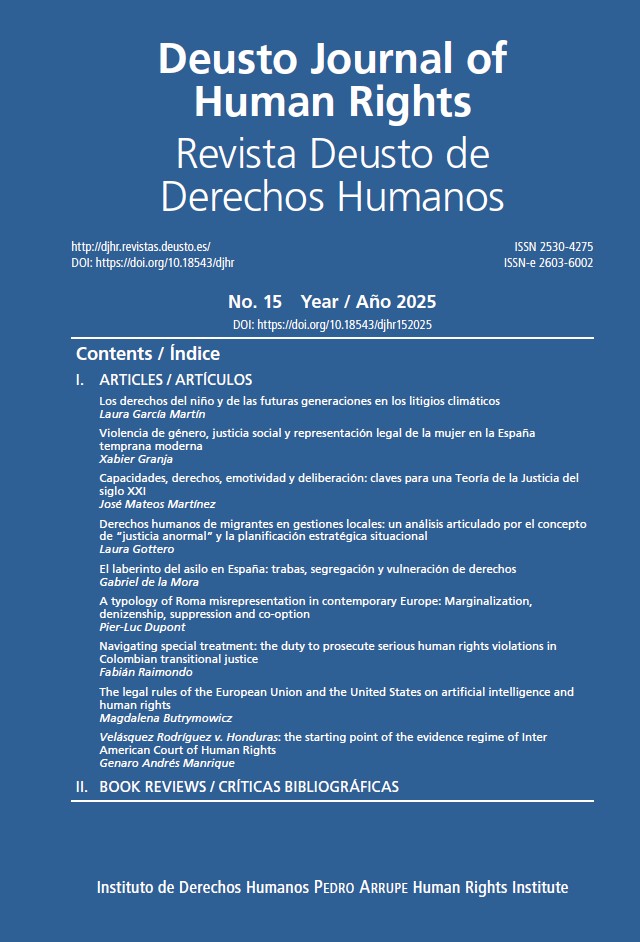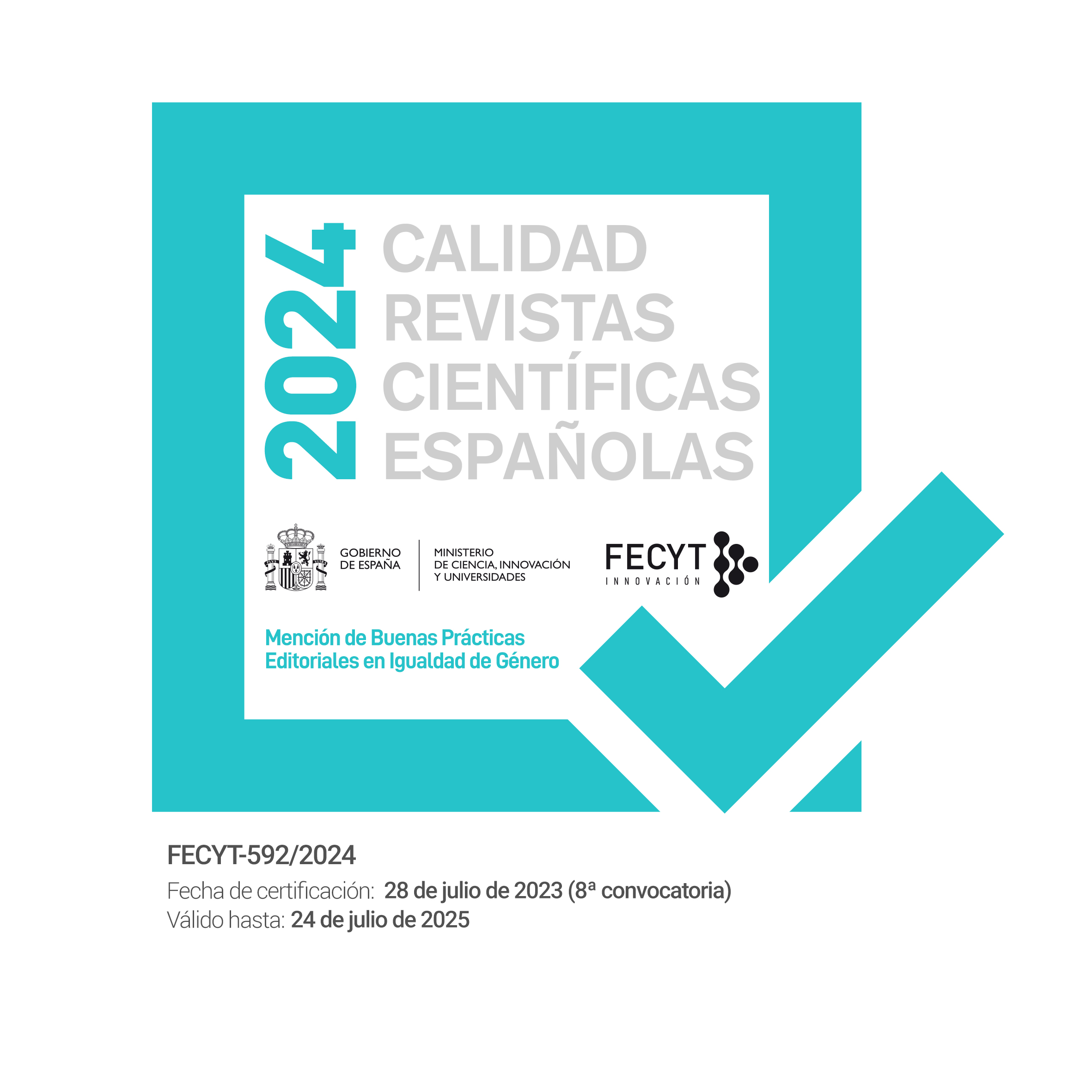Velásquez Rodríguez v. Honduras: The role of victims’ legal representatives in shaping the Inter-American Court’s evidentiary regime
Abstract
The landmark case of Velásquez Rodríguez v. Honduras (1988) not only initiated the jurisprudence of the Inter-American Court of Human Rights but also established foundational principles of its evidentiary regime. These standards, including the concept of forced disappearances, rules on burden of proof, and use of presumptions and testimonial evidence, continue to shape contemporary caselaw. This paper highlights the overlooked role of the legal representatives of the victims in proposing these evidentiary principles. It comprehensively examines the case, delving into its facts, the Honduran context, the role of legal representatives of the victims, and the impact of Velásquez Rodríguez on the Court’s evidentiary regime and future caselaw.
Received: 08 April 2024
Accepted: 15 January 2025
Articles in Press: 15 April 2025
Downloads
References
Aguilar-Paz, Ernesto. 1990. «Honduras: ¿se iniciará el cambio?» Nueva Sociedad 106: 22–27.
Amnesty International. 1992. ‘Disappearances’ in Honduras: A wall of silence and indifference. Accessed February 10, 2024: https://www.amnesty.org/fr/wp-content/uploads/2021/06/amr370021992en.pdf.
Bovino, Alberto. 2005. «La actividad probatoria ante la Corte Interamericana de Derechos Humanos.» SUR- Revista Internacional de Derechos Humanos 3: 61–83. Accessed February 15, 2024: https://sur.conectas.org/es/la-actividad-probatoria-ante-la-corte-interamericana-de-derechos-humanos/.
Burgorgue-Larsen, Laurence. 2005. «La Corte Europea de Derechos Humanos y el derecho penal.» Anuario de Derecho Internacional, 317–78.
Burgorgue-Larsen, Laurence, and Amaya Úbeda de Torres. 2011. The Inter-American Court of Human Rights: Case-Law and Commentary. Oxford: Oxford University Press.
Caro, Dino C. 2012. «La prueba en el crimen de desaparición forzada de personas conforme a la jurisprudencia de la Corte Interamericana de Derechos Humanos.» Ius et Veritas 22 (44): 358–85.
Cavallaro, James, and Stephanie E. Brewer. 2008. «Reevaluating regional human rights litigation in the twenty-first century: The case of the Inter-American Court.» The American Journal of International Law 102 (4): 768–827.
Drucker, Linda. 1988. «Governmental liability for disappearances: A landmark ruling by the Inter-American Court of Human Rights.» Stanford Journal of International Law 25 (1): 289–322.
Gill, Lesley. 2005. Escuela de Las Américas. Entrenamiento militar, violencia política e impunidad en las Américas. Santiago: LOM.
Grossman, Claudio. 1992. «Disappearances in Honduras: The need for direct victim representation in human rights litigation.» Hastings International and Comparative Law Review 15 (3). Accessed March 1, 2024: https://repository.uchastings.edu/hastings_international_comparative_law_review/vol15/iss3/1.
Grossman, Claudio. 2007. «The Velasquez Rodriguez case: The development of the Inter-American Human Rights system.» In International Law Stories, edited by John E. Noyes, Laura A. Dickinson, and Mark W. Janis, 77-113. New York: Foundation Press.
Grossman, Claudio. 2009. «The Inter-American system and its evolution.» Inter-American and European Human Rights Journal 2 (1–2): 49–65.
Lopes Cerqueira, Daniel. 2018. «Valoración y estándar de prueba en la jurisprudencia de la Corte Interamericana de Derechos Humanos en casos de violencia de género.» Actualidad Jurídica 296: 152–70.
Medina, Cecilia. 2005. La Convención Americana: Teoría y jurisprudencia. Vida, integridad personal, libertad personal, debido proceso y recurso judicial. Santiago: Universidad de Chile.
Medina, Cecilia. 2011. «Modificación de los reglamentos de la Corte Interamericana de Derechos Humanos y de La Comisión Interamericana de Derechos Humanos al procedimiento de peticiones individuales ante la Corte.» Anuario de Derechos Humanos 0 (7): 117–26. DOI: 10.5354/0718-2279.2011.17001.
Méndez, Juan E., and José M. Vivanco. 1990. «Disappearances and the Inter-American Court: Reflections on a litigation experience.» Hamline Law Review 13: 507–77.
Molina, Ana L. 2007. «La desaparicion forzada de personas en América Latina.» Estudios Básicos de Derechos Humanos 4: 65–129.
Pasqualucci, Jo M. 1994. «The Inter-American Human Rights System: Establishing precedents and procedure in Human Rights Law.» Inter-American Law Review 26 (2): 297–361.
Paúl, Álvaro. 2015a. «Análisis sistemático de la evaluación de la prueba que efectua la Corte Interamericana de Derechos Humanos.» Revista Chilena de Derecho 42 (1): 297–327.
Paúl, Álvaro. 2015b. «An overview of the Inter-American Court’s evaluation of evidence.» In The Inter-American Court of Human Rights: Theory and practice, present and future, edited by Yves Haeck, Oswaldo Ruiz-Chiriboga, and Clara Burbano-Herrera, 25–50. Accessed March 20, 2024: https://papers.ssrn.com/abstract=2822375.
Pervou, Ioanna. 2023. The right not to be subjected to enforced disappearance. The right not to be subjected to enforced disappearance. Switzerland: Springer. DOI: 10.1007/978-3-031-36731-1.
Roberts, Christopher. 2021. «Reversing the burden of proof before human rights bodies.» International Journal of Human Rights 25 (10): 1682–1703. DOI: 10.1080/13642987.2020.1859486.
Taqi, Irum. 2000. «Adjudicating disappearance cases in Turkey: An argument for adopting the Inter-American Court of Human Rights’ approach.» Fordham International Law Journal 24 (3): 940–87.
Vermeulen, Marthe L. 2012. Enforced disappearance: Determining state responsibility under the International Convention for the protection of all persons from enforced disappearance. Cambridge: Intersentia.
Copyright (c) 2025 University of Deusto

This work is licensed under a Creative Commons Attribution-NonCommercial 4.0 International License.
Deusto Journal of Human Rights / Revista Deusto de Derechos Humanos is an Open Access journal; which means that it is free for full and immediate access, reading, search, download, distribution, and reuse in any medium only for non-commercial purposes and in accordance with any applicable copyright legislation, without prior permission from the copyright holder (University of Deusto) or the author; provided the original work and publication source are properly cited (Issue number, year, pages and DOI if applicable) and any changes to the original are clearly indicated. Any other use of its content in any medium or format, now known or developed in the future, requires prior written permission of the copyright holder.



3.jpg)
3.jpg)
3.jpg)
.jpg)








